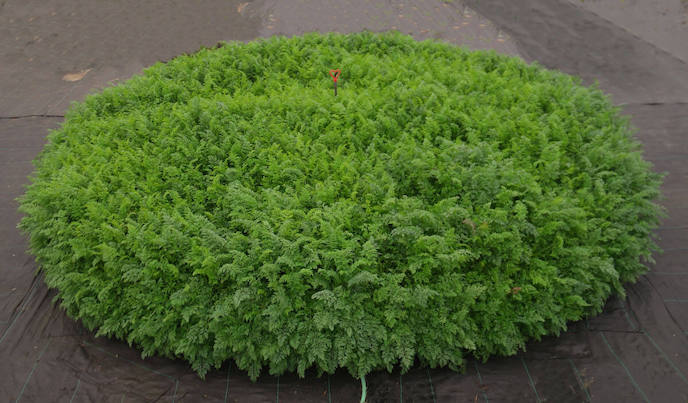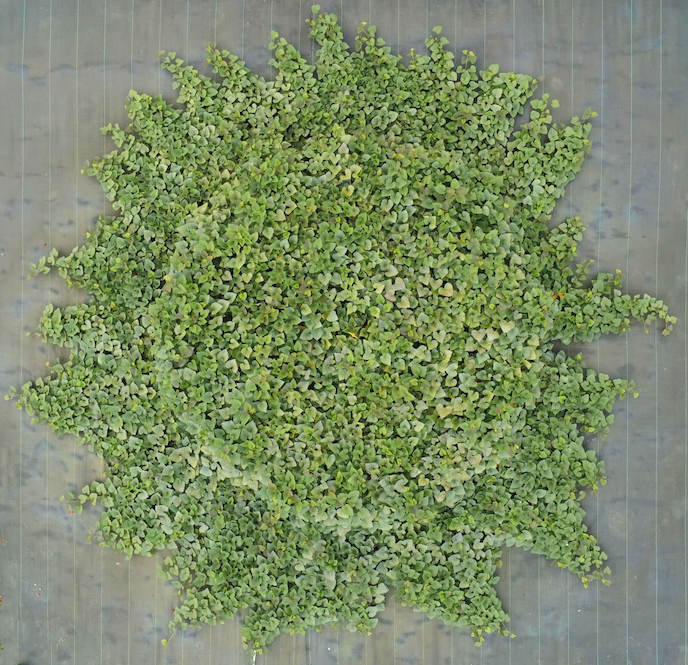
Growing Carrots
Growing carrots the traditional way in raised or trenched farm and garden rows requires a lot of space and water resources. A farm row grows about 40 carrots per foot in long raised furrows that parallel one another. Water periodically released between rows irrigates the carrots. A garden row grows 10 carrots per foot on average. A row of carrots in the garden is typically watered from above with an overhead sprinkler. Both farm and garden watering methods waste a tremendous amount of water.
Growing Carrots In Challenging Places And Spaces
Carrots are loved by many and considered a staple food in parts of the world where conditions are less than favorable for growing carrots, particuarily those facing some level of food insecurity. In an effort to address these food insecurity issues, Crop Circle Farms has developed a Carrot Grower that can grow carrots in challenging places and spaces, including rooftops, empty city lots, parking lots, community gardens, refuge camps, food deserts, indigenous comuunities and island nations dependent on an imported food supplies.
Crop Circle Carrot Growers
 Crop Circle Growing Carrots
Crop Circle Growing CarrotsCrop Circle Carrot Growers are panelized soil filled circles that assemble in just 30 minutes that grow thousands of carrots in just 15 feet of space.. Carrots are harvested every 60 to 80 days depending on the variety of carrot. In some climates, carrots can be planted and harvested as many as 3 times in a single season.
Carrot Grower Advantages
- Soil Control – soil consistency is of paramount importance for growing carrots. To grow a properly formed carrot root that is long, straight and slender, the soil must be loamy and loose. The Carrot Grower contains the soil in a perfect circle elevating carrots 20 inches above the ground and out of the reach of most plant munchers.
- Nutrient Control – It is important the soil contains the right mix of nutrient for growing carrots. Aged plant and animal compost mixed thoroughly with the soil will grow great carrots.
- Water Control – Carrots are intermittently irrigated using a 360-degree butterfly spray nozzle from the center of the circle saving a tremendous amount of water; important for regions facing water scarcity issues.
- Grow Anywhere – Growing carrots anywhere makes this system an invaluable “point-of-use” plant propagation system capable of growing carrots right where people live and work.
- Plant And Forget – Once the Carrot Grower is set up and operating, it becomes a true “plant-and-forget” method of growing carrots unmonitored for weeks until harvest.
- Weed Control – High density planting chokes out weed growth after a week or two creating a "no-weed" growing environment during the plants growth cycle.
Planting Carrots
When planting carrots, seed density is vitally important; if carrot seeds are too far apart, then production per unit of space will be lower and if carrot seeds are too close together, then carrots will struggle mature and take too long to grow.
A Crop Circle Seed Dispenser is used to space carrot seeds at the proper distance; about 2 inches on center. It takes just 10 minutes to sow 5,000 carrot seeds by hand. A moveable ramp system that partially spans the grower is used to access the grower for seeding and weeding.

Once seeds are broadcast, they are covered with a half an inch of compost and then watered using the spray nozzle at the center of the grower. A garden hose connected to an external water supply provides irrigation.
The Crop Circle Carrot Grower is deep; deep enough to grow 20-inch long root Imperator type carrots. Other types of carrots grow well as well including colored yellow, purple, white and orange carrots, Nantes carrots, Chantenay carrots, Danver Carrots and Romeo carrots for salads.
 Growing Colored Carrots
Growing Colored CarrotsHarvesting Carrots
Carrots are pulled in bunches or separated after the panels are disassembled. In most growing zones, a second or third carrot harvest is possible the same season. Five to ten thousand carrots can be grown in a 15 foot Crop Circle Carrot Grower every 2 months.
After harvest, Crop Circle Carrot Grower soil is recharged by mixing additional plant and animal compost with manure fertilizer and adding it to the soil. At the end of the season, the Crop Circle Carrot Grower is disassembled and stored over the winter. It is reassembled in the spring with new soil and fertilizers and then planted with carrots.
An optional enclosure protects carrots from the elements in early spring and late fall. An optional germination cloth germinate carrot seeds in half the time cutting two weeks from the growing cycle, which is important for achieving more than one harvest the same season. Even in areas where two harvests are common, a third is entirely possible using the germination cloth.
Grow More Than Carrots
The Crop Circle Carrot Grower also grows other types of vegetables including sweet and root potatoes. As a Crop Circle Potato Grower, it is capable of growing a ton of potatoes. For growing root potatoes, an opening slightly smaller than the diameter of the Crop Circle Potato Grower is cut out from a ground cover that prevents weeds from growing around the perimeter of the grower.
Grow Seed Potatoes
The Crop Circle Potato Grower assembles into a paneled circle that is filled with loose-composted soil that covers approximately 200 seed potatoes laid out over the soil at grade within the grower and the circle cut out of the ground cover.
Seed potatoes are covered with 3 layers of growth medium. The lowermost layer should be high in Potassium, which will improve the storage life of a potato. The middle layer should be high in Phosphorous, which will increase the number of tubers (potatoes) per plant and the uppermost layer should contain Nitrogen to assist in early plant development.
As the potatoes sprout, they push root down and up from each potato eye and within a couple of weeks, new potato plants will emerge on top of 15-inch root stems. Tubers will form along the length of each stem as the plant grows and flowers. An early harvest will reap new potatoes however; leaving them in the soil a little longer will give potatoes time to develop thicker skins, which is best for long-term storage.
Grow Sweet Potatoes
When growing sweet potatoes, the panels are assembled on top of the ground cover. Because sweet potatoes grow near the soil surface, there will be no need to cut an opening out from the ground cover, The grower is filled with growth medium halfway to the top and then filled the rest of the way with a mixture of aged plant and animal compost containing Phosphorus, Potassium and Nitrogen. Approximately 200 potato slips transplanted about a foot apart across the surface of the soil will be needed to grow a ton of sweet potaotes.
 Crop Circle Growing Potatoes
Crop Circle Growing PotatoesSweet potato slips are delicate, so it is important that they are hardened off from the sun before transplant. Within a few weeks they will start to vine, first on top of the growth medium, then down over the sides of the grower and across the surrounding ground cover. About 2,000 bake size sweet potatoes can be expected at harvest.